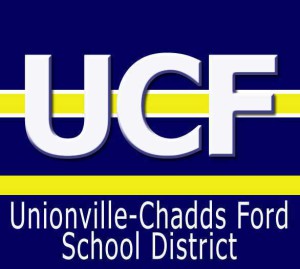Redistricting results by McKissick Associates presented to the school board
By Karen Cresta, Correspondent, The Times
 EAST MARLBOROUGH – There were no voting items on the agenda for a special Unionville-Chadds Ford School District (UCFSD) Board of Education meeting held on Tuesday night. Instead, it was an interactive process with the board and the public to review the enrollment and population projections developed by the hired consultants, McKissisck Associates.
EAST MARLBOROUGH – There were no voting items on the agenda for a special Unionville-Chadds Ford School District (UCFSD) Board of Education meeting held on Tuesday night. Instead, it was an interactive process with the board and the public to review the enrollment and population projections developed by the hired consultants, McKissisck Associates.
John Sanville, Superintendent of Schools, revealed the big news without hesitation – there will be no redistricting for the 2015-2016 school year. That’s not to say that the concern for increased enrollment, especially at Pocopson Elementary won’t present itself again – but each year in March (preferably February, officials said) the board will revisit enrollment factors in each of the schools.
The presenting concern that started the study this past October – Pocopson Elementary is at 89 percent capacity while some other elementary schools have spare capacity (at approximately 70 percent). The goal of the district is to provide the same academic experience at each of the four elementary schools. In order to deliver, capacity factors at each building are regularly examined.
The recent trends indicated that these factors were stable at Chadds Ford, declining at Hillendale and Unionville and growing at Pocopson Elementary. There are currently 735 seats available at Pocopson and 652 of them are occupied; Chadds Ford has 502 seats available and only 350 are occupied. Another concern is that all of Pocopson’s 28 classrooms are currently being utilized.
If Pocopson Elementary needed another classroom in the near future, it would be reviewed and an available school room repurposed while keeping the district goals in mind of never compromising the educational experience or increasing classroom size.
Sanville reminded the board and audience that redistricting has nothing to do with class size.
“We don’t exceed our guidelines in any class at Pocopson Elementary,” he added.
The three guiding principles in the study that were non-negotiable were that all of the elementary schools would remain as K-5 establishments, each would continue to provide the same academic experience, and no decisions would be made until all stakeholders were fully engaged.
Sanville ensured that his redistricting roadshow was presented to all the stakeholders. He chaired an advisory committee consisting of School Board members, office administrators, elementary principals, parents, school counselors and planning commissioners. He presented the current status and action plan to the School Board, to the Parent-Teacher Organization (PTO) meetings and school staff meetings at all six schools and obtained input and feedback to move forward with the study.
He reminded the audience that he did “no fewer than twenty presentations to help engage our community.”
Kristen and Vern McKissick presented some of the major factors involved with reaching the projected enrollment numbers such as birth rate and future housing developments. They discussed the birth rate trend being low in the district based on economic trends and family planning.
The McKissick team met with the municipalities and identified raw land in each township with the potential to be developed and the impact of any new students stemming from this growth. They also analyzed past enrollment trends and the effect over the next 5 years, 5-10 years, etc.
The results suggested limited impact and did not warrant change at this time in the current districting.
Of course, the facilities have to be able to handle the increase, if any, in population demands. The board will continue to monitor elementary enrollment and growth factors closely as well as identify trigger points for action and add any new information into the current model as needed.
The advisory committee suggested that moving forward only raw land would be redistricted if developed and the administrators talked about offering voluntary change of schools. Even the slightest redirection of new enrollment to the schools with the capacity can be evaluated as needed.
“It’s best to have a plan in place,” Sanville concluded.
A plan may be needed by 2017 when some models show that Pocopson will require as many as 30 classrooms. The board will continue to look at projections closely. McKissick Associates will present a finalized report including a narrative of how the results were obtained and what they mean.
All information is available on the board’s website at www.ucfsd.org.







